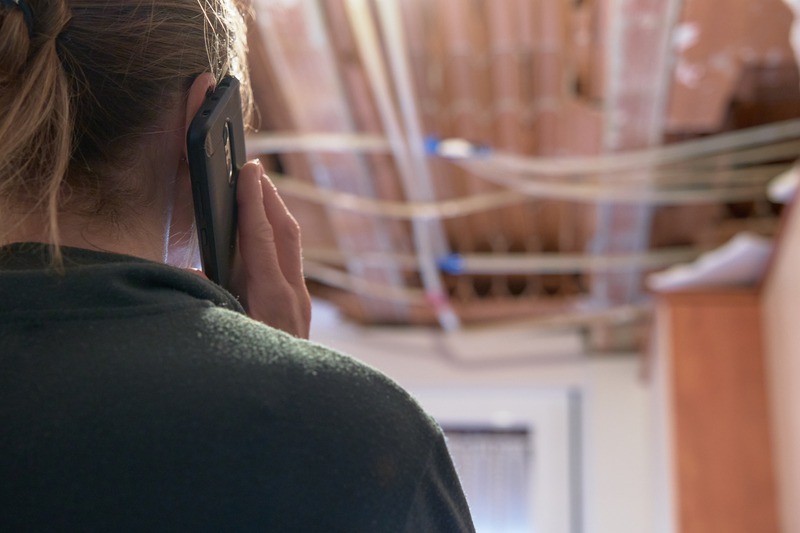
Restoration projects, whether fixing up a home after water damage or dealing with structural repairs, can be quite a challenge. While they offer opportunities to improve and rejuvenate spaces, safety remains a top concern. Ensuring safety not only protects physical well-being but also validates the quality of work done. So, it’s important to take proper precautions and follow best practices during restoration. In this article, we’ll explore essential tips to ensure safety during restoration activities, making the process smoother and safer. We aim to make this a handy resource, providing insight into creating a safe environment for everyone involved.
What Are Effective Safety Measures for Restoration Activities?
Taking care of safety during restoration involves several key steps and considerations. Let’s get straight to the basics.
-
Understand Hazards: Before starting any restoration project, it’s crucial to identify potential hazards. These could be anything from structural weaknesses to electrical dangers. Knowing these risks is the first step in avoiding accidents.
-
Wear Protective Gear: Always wear appropriate safety gear. This includes helmets for head protection, gloves for handling sharp objects, and masks if there’s a chance of inhaling dust or fumes. Wearing the right gear can prevent many injuries.
-
Secure the Area: Make sure that the restoration site is secure. This can be achieved by putting up signs, fencing off the area, or making sure unwanted entry is restricted. Keeping the site secure helps to protect both workers and bystanders.
-
Double-Check Equipment: Regularly inspect tools and equipment to ensure they’re in good working condition. Faulty equipment can lead to accidents, so it’s important to perform routine checks and maintenance.
-
Follow Guidelines: Adhere to industry safety standards and guidelines. These guidelines are designed to ensure that work is performed safely and effectively.
Common Safety Concerns
Each restoration project comes with a unique set of safety concerns. Learning about these can help minimize risks. For instance, working with water-damaged properties can present the threat of mold. Mold can cause respiratory issues if not handled properly. On the other hand, projects involving ceiling repairs might risk debris falling. Understanding these common issues can make it easier to prepare and equip oneself properly. Effective planning and preparation play significant roles in addressing these safety concerns.
Safe Handling of Hazardous Materials
During restoration, there’s often a need to deal with hazardous materials. To handle these materials safely, follow these general rules:
-
Proper Labelling: Ensure that all hazardous materials are clearly labeled. This reduces the risk of accidental exposure.
-
Storage Protocols: Store chemicals and hazardous materials according to safety protocols to avoid spills and potential reactions.
-
Disposal Methods: Use proper disposal methods for hazardous waste. This ensures that environmental safety is maintained and reduces potential hazards.
Fire Safety Measures
Fire safety is another critical aspect of restoration. Having a plan in place for fire emergencies is vital. Keep fire extinguishers in easily accessible locations. Ensure that everyone involved in the restoration process is aware of the evacuation routes and procedures. Regularly test smoke detectors to ensure they function properly. These measures help to minimize the risk of fire-related incidents on the site.
Proper Training for Workers
Another key to ensuring safety during restoration is the proper training of workers. Workers should be knowledgeable about safe work practices and emergency procedures. Regular safety training sessions can keep them updated on the latest safety protocols. Additionally, ensuring that workers know how to properly use the equipment can prevent mistakes that might lead to injuries.
It’s also important for workers to understand their limitations. No one should attempt tasks beyond their capabilities or without proper supervision. Encouraging a culture of safety and openness can help workers feel comfortable speaking up when they spot potential risks.
Plan for Risk Assessment
Before any restoration work begins, carry out a risk assessment. This involves evaluating the site to identify risks and determine how to handle them. A risk assessment allows for the following:
-
Identifying Potential Hazards: Spot possible trouble areas that could pose risks to workers or the structure.
-
Creating Safety Plans: Develop plans to address the identified risks.
-
Implementing Controls: Utilize controls and measures to reduce the risks as much as possible.
-
Regular Monitoring: Monitor the work site continuously to ensure that risk control measures are effective.
Emergency Preparedness
Preparation for emergencies is just as important as preventing them. Have an emergency plan in place tailored to the specific site and hazards. Ensure everyone knows their role in an emergency, how to respond, and who to communicate with. Keep first aid kits readily available and make sure personnel are trained in basic first aid and CPR. Communication is key during emergencies, so establish clear methods for internal and external communication.
Local contractors that provide property restoration services in Alexandria can greatly help individuals in assessing and preparing for emergencies. They have the experience needed to identify potential issues and ensure that the restoration process goes as planned.
Weather-Related Concerns
During outdoor restoration projects, weather can pose significant challenges. Make sure to regularly check weather updates and forecasts. Postpone work during severe weather conditions like heavy rain, snow, or storms, as these can increase the risk of accidents. Protect exposed areas from rain or snow using tarps and temporary shelters to prevent additional damage and hazards. Proper equipment and clothing are essential during extreme temperatures, both to ensure safety and keep workers comfortable.
Dealing with Water Damage
Water damage restoration can be particularly tricky. Standing water can weaken structures and may become a breeding ground for mold and bacteria. Engaging experts who specialize in water removal Alexandria is advisable, as they can efficiently address water-related issues and ensure a safer environment for restoration activities. Additionally, it’s important to wear rubber-soled boots to prevent slipping and work in well-ventilated areas..
Mental Well-being and Stress Management
Restoration projects can easily become overwhelming, leading to stress and anxiety. It’s vital to acknowledge that mental well-being is part of safety. Encourage breaks and allocate tasks evenly to avoid burnout. Promote open communication among team members to manage stress effectively. Having a well-planned schedule can also help manage workload and reduce stress levels, ultimately leading to a safer and more productive team.
Handling Biohazards
Biohazards such as sewage can pose serious health risks. It’s important to approach these with the highest level of caution. Using expert Alexandria sewage cleanup services can ensure the proper handling and disposal of hazardous materials. Professionals have specialized equipment and protective gear to manage these disasters safely. The correct handling of biohazards not only protects workers but also helps maintain a safe restoration environment.
Final Thoughts
Restoration work requires careful planning, preparation, and execution to be safe. Prioritizing safety reduces accidents, safeguards workers, and maintains the project’s integrity. This, in turn, results in successful restoration outcomes. By following the steps outlined in this article, one can tackle restoration projects with confidence, ensuring safety for everyone involved. Remember, taking time to implement safety measures is an investment in a safe and healthy restoration environment.

